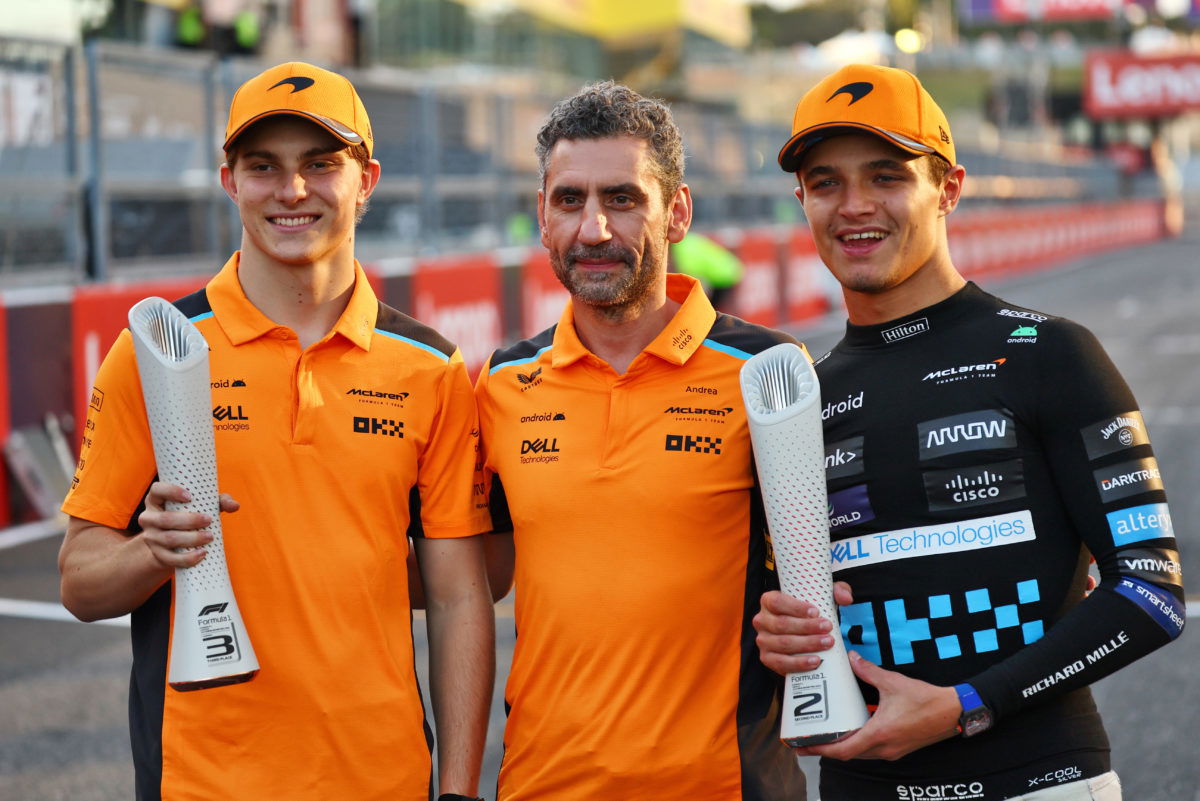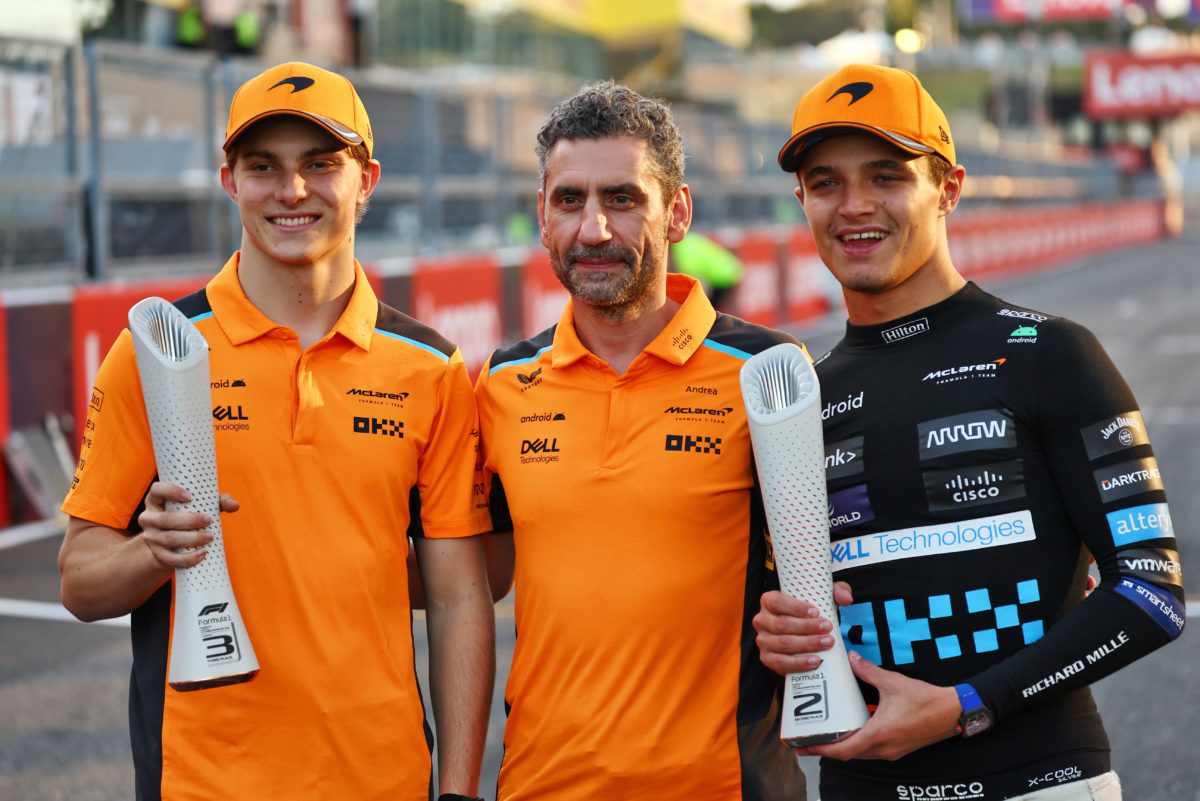

Andrea Stella feels Oscar Piastri has set McLaren on a steeper gradient than he anticipated following the young Australian’s stunning surge to the front of the grid.
F1 rookie Piastri has thrust himself into the spotlight with his performances over the past few grands prix, initially qualifying an eye-opening second for the Japanese GP, pipping more established team-mate Lando Norris in the process.
Although Piastri found himself lacking race pace as Norris turned the tables in the main event at Suzuka to finish as runner-up ahead of the Melburnian, the 22-year-old then delivered handsomely in the following event in Qatar.
Piastri won the sprint race from pole position, before taking the runner-up accolade himself in the race, with Norris third.
Stella is now appreciating why McLaren fought hard with Alpine to land a driver who excelled in the junior formulae by winning the Formula Renault Eurocup, F3 and F2 titles in successive seasons.
“There were clearly strong efforts to get Oscar, and that was very much based on what he had achieved in the junior categories,” said Stella, speaking on the F1 Nation podcast.
“But once we started working with him, we understood, first of all, those efforts were worthwhile. We also understood why he was so successful in the junior categories, winning championships three times in a row at the first attempt.
“He goes back in this category of drivers whom, you put them in a car, you put them in the simulator, and they just immediately show their natural speed, and for Oscar, I would say especially in high-speed corners, it’s almost his natural ground.
“Normally drivers are more comfortable in low speed, but Oscar almost doesn’t really perceive the associated elements of being so fast.
“He seems to be in his comfort zone in these high-speed corners and then, more technically, he’s working on developing the low-speed stuff.
“As he does this development journey, what impressed us is his awareness. His awareness of what the opportunities are, even before he looks at an overlay or looks at any telemetry.
“He has this capacity to self-recognise where there’s more to come from either himself or from the car. I know drivers that can be fast, but they definitely need external support to see what is possible, either from themselves or from the car.
“Oscar has this characteristic very developed in terms of being a good judge of these opportunities.”
Piastri’s performance over one lap in Suzuka stood out for Stella, whilst his driver also recognised his deficiencies in the race which he is now seeking to work on, making quick adjustments for the Qatar GP.
“It’s how rapidly he progressed from being a rookie driver in Suzuka to putting the car on the first row,” said Stella.
“That’s quite an impressive journey if you consider how rapidly you need to, not only identify the opportunities, but embed in your own driving what your hands, feet, and brain are going to process at quite high speed and drive the car as fast as you can.
“I think his comments after the race show that he’s a rookie and if anything, to be consistent in the race is where experience actually plays a fundamental part.
“I think he just acknowledged, ‘I know I could have done better’, and in the final stint, I think he had already capitalised on some of the learning through the race and he cashed in some improved performance.
“He’s definitely a quick learner, he has a large capability from a self-awareness point of view, and then he has this capacity and capability to drive according to the opportunity identified, which for me is a definition of talent.”
With that talent, though, and the speed shown around one of F1’s fabled circuits in Suzuka, Stella knows that from second on the grid, making that leap to pole position has additional, albeit welcome, consequences for the team as a whole.
Initially assessing how good Piastri will be in five years’ time, Stella said: “I don’t really work by targets. I don’t really work by projection.
“I only work by Oscar, the team around Oscar, McLaren – ‘What do we need to keep this pace of development?’, and then we see where we end up in five years.
“Let’s say, if I really needed to project, in the first season he puts the car P2 in qualifying in Japan. It means the gradient is quite steep.
“For me, I felt immediately the responsibility more on me than on the driver. Me and the team need to make sure we give these guys a good car and the drivers, they are not going to be a problem at all.”






















Discussion about this post